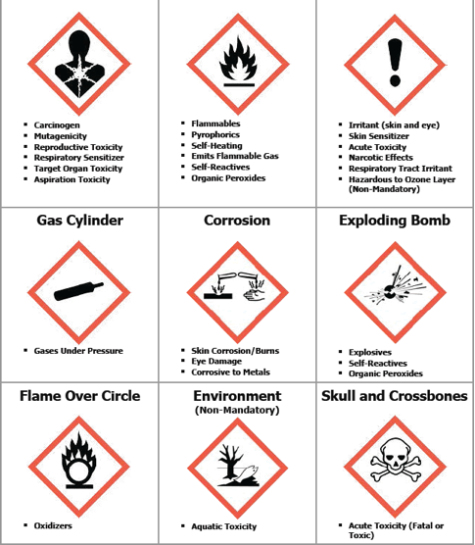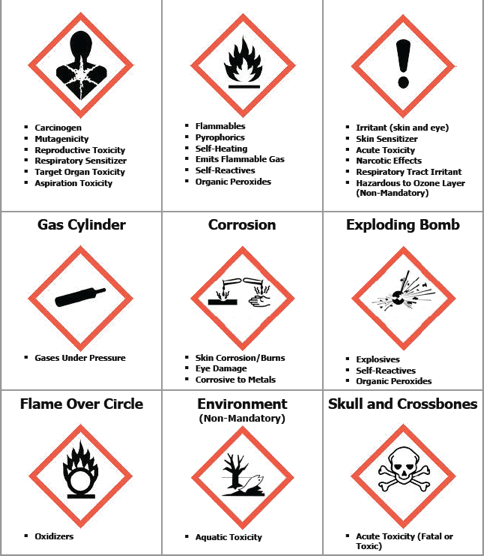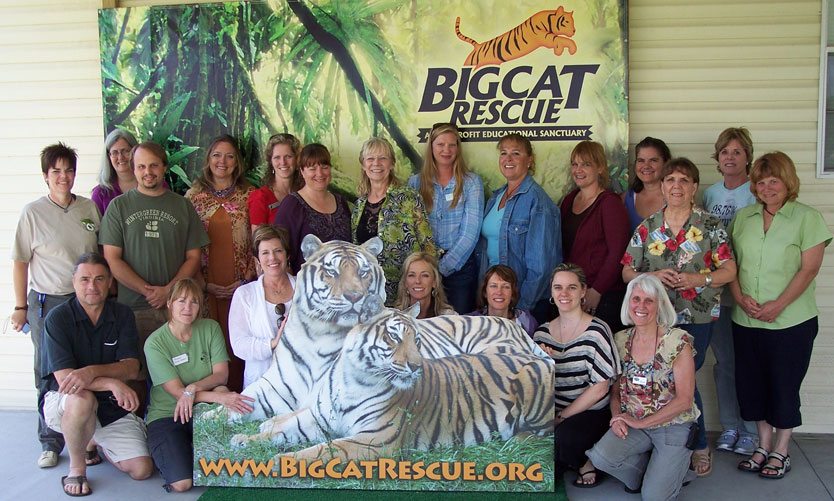Hazard Communication Program
Hazard Communication Program
1. Introduction
The management of Big Cat Rescue is committed to preventing accidents and ensuring the safety and health of our employees. We will comply with all applicable federal and state health and safety rules. Under this program employees are informed of the contents of the OSHA Hazard Communications Standard, the hazardous properties of chemicals with which they work, safe handling procedures and measures to take to protect themselves from these chemicals. Theses chemicals may be physical or health-related. This written hazard communication plan is available at the following location for review by all employees:
Operations Manager Office
2. Identifying Hazardous Chemicals
A list that identifies all hazardous chemicals with a potential for employee exposure at this workplace is maintained on our website at https://bigcatrescue.org/msds/. Detailed information about the physical, health, and other hazards of each chemical is included in a Safety Data Sheet (SDS) linked to the product name on that list; the product identifier for each chemical on the list matches and can be easily cross-referenced with the product identifier on its label and on its Safety Data Sheet.
3. Identifying Containers of Hazardous Chemicals
The labeling system to be used by Big Cat Rescue will follow the requirements in the 2012 revision of the OSHA Hazard Communication Standard to be consistent with the United Nations Globally Harmonized System (GHS) of Classification of Labeling of Chemicals.
The label on the chemical is intended to convey information about the hazards posed by the chemical through standardized label elements, including symbols, signal words and hazard.
All hazardous chemical containers used at this workplace will have:
1. The original manufacturer’s label that includes a product identifier, an appropriate signal word, hazard statement(s), pictogram(s), precautionary statement(s) and the name, address, and telephone number of the chemical manufacturer, importer, or other responsible party.
2. A label with the appropriate label elements just described.
3. Workplace labeling that includes the product identifier and words, pictures, symbols, or combination that provides at least general information regarding the hazards of the chemicals.
The Operations Manager will ensure that all containers are appropriately labeled. No container will be released for use until this information is verified. Workplace labels must be legible and in English.
Small quantities intended for immediate use may be placed in a container without a label, provided that the individual keeps it in their possession at all times and the product is used up during the work shift or properly disposed of at the end of the work day. However, the container should be marked with its contents.
4. Keeping Safety Data Sheets (previously known as Material Safety Data Sheets)
The manufacturer or importer of a chemical is required by OSHA to develop a Safety Data Sheet (SDS) that contains specific, detailed information about the chemical’s hazard using a specified format. The distributor or supplier of the chemical is required to provide this SDS to the purchaser.
SDS’s are readily available to all employees during their work shifts. Employees can review SDS for all hazardous chemicals used at this workplace at https://bigcatrescue.org/msds/
The SDS’s are updated and managed by Carole Baskin. If a SDS is not immediately available for a hazardous chemical, employees can obtain the required information by calling Carole Baskin.
5. Training Employees about Chemical Hazards
Before they start their jobs or are exposed to new hazardous chemicals, employees must attend a hazard communication training that covers the following topics:
• An overview of the requirements in OSHA’s Hazard Communication Standard.
• Hazardous chemicals present in their workplace.
• Any operations in their work area where hazardous chemicals are used.
• The location of the written hazard communication plan and where it may be reviewed.
• How to understand and use the information on labels and in Safety Data Sheets.
• Physical and health hazards of the chemicals in their work areas.
• Methods used to detect the presence or release of hazardous chemicals in the work area.
• Steps we have taken to prevent or reduce exposure to these chemicals.
• How employees can protect themselves from exposure to these hazardous chemicals through use of engineering controls/work practices and personal protective equipment.
• An explanation of any special labeling present in the workplace.
o What are pictograms?
o What are the signal words?
o What are the hazard statements?
o What are the precautionary statements?
• Emergency procedures to follow if an employee is exposed to these chemicals.
The Operations Manager is responsible to ensure that employees receive this training.
Prior to introducing a new chemical hazard into any department, each employee in that department will be given information and training as outlined above for the new chemical.
6. Informing Employees who do Special Tasks
 Before employees perform special (non-routine) tasks that may expose them to hazardous chemicals, their supervisors will inform them about the chemicals’ hazards. Their supervisors also will inform them about how to control exposure and what to do in an emergency. The employer will evaluate the hazards of these tasks and provide appropriate controls including Personal Protective Equipment and all additional training as required.
Before employees perform special (non-routine) tasks that may expose them to hazardous chemicals, their supervisors will inform them about the chemicals’ hazards. Their supervisors also will inform them about how to control exposure and what to do in an emergency. The employer will evaluate the hazards of these tasks and provide appropriate controls including Personal Protective Equipment and all additional training as required.
Examples of special tasks that may expose employees to hazardous chemicals include the following: None identified.
7. Informing contractors and other employers about our hazardous chemicals
If employees of other employer(s) may be exposed to hazardous chemicals at our workplace (for example, employees of a construction contractor working on-site) It is the responsibility of the Operations Manager to provide contractors and their employees with the following information:
• The identity of the chemicals, how to review our Safety Data Sheets, and an explanation of the container labeling system.
• Safe work practices to prevent exposure.
The Operations Manager will also obtain a Safety Data Sheet for any hazardous chemical a contractor brings into the workplace.
HCS Pictogram and Hazards





